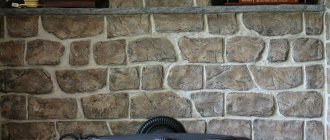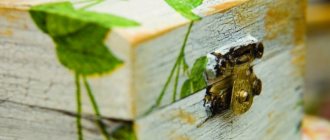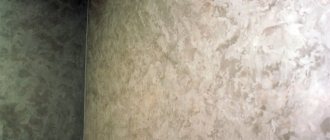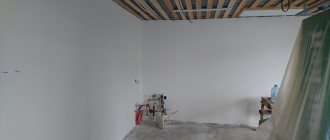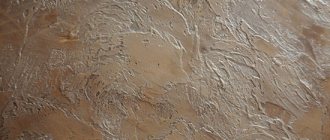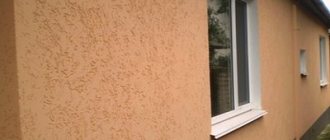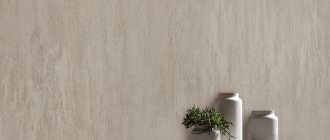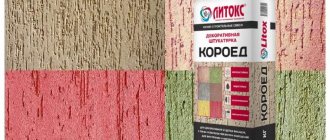In fine art, the Italian word impasto (dough or paste) refers to a technique using undiluted paint that is applied thickly to the canvas. Initially, the method was used to mask defects or certain fragments of a painting - artists mixed pigments directly on the canvas to obtain the desired color or effect.
This technique can add a three-dimensional, almost sculptural quality or create unique textures. The technique uses thickened opaque layers - oil, acrylic, gouache and tempera. Thick brush strokes created relief surfaces on which traces of a brush or spatula are still clearly visible. Some artists applied the method to specific elements of the painting, others, like Vincent Van Gogh, executed entire canvases in impasto.
Features of the technology
The use of impasto evolved into a true exploration by artists of the properties of oil pigment, the standard medium in Western painting during the Renaissance. Oil paintings dry slowly, allowing artists to apply it in thick strokes or in multiple layers. To create particularly expressive effects, paint is applied with a palette knife instead of a brush.
- Unlike wet-on-wet mixing, the impasto technique actually creates a physical sense of volume in expressive, abstract works. To make strokes denser, artists sometimes add wax or other substances.
- Baroque painters, who practically pioneered the technique, mixed paints with varnish or zinc white for rough textures, combined with other techniques to create a wide range of textures and effects in a single work.
- The Impressionists, who prided themselves on spontaneous plein air works, took a completely different approach. Unlike earlier artists, the Impressionists purchased ready-made mixtures and used paint straight from the tube. Thick, vibrant oil paintings retain brush marks.
- Artists of the Post-Impressionist Expressionist era also used thick layers similar to the Impressionists, a practice continued by the Abstract Expressionists throughout the last century.
Northern Renaissance painting
Additional educational program “Volume painting”
Resolution of the Chief Sanitary Inspector of the Russian Federation dated July 4, 2014 No. 41 “On approval of SanPiN 2.4.4.3172-14 “Sanitary and epidemiological requirements for the design, content and organization of the operating mode of educational institutions of additional education for children”;
Strategy for the development of education in the Russian Federation for the period until 2025, approved by Order of the Government of the Russian Federation of May 29, 2015 No. 996-r.
Concept for the development of additional education in the Russian Federation (dated 09/04/2014 No. 1726-R);
Action plan for 2015-2020 for the implementation of the Concept for the development of additional education for children, approved by order of the Government of the Russian Federation dated September 4, 2014 No. 1726-r;
The concept of a national system for identifying and developing young talents for 2015-2020 (approved by the President of the Russian Federation on April 3, 2012 No. Pr-827) and a set of measures for its implementation (approved by the Government of the Russian Federation on May 27, 2015 No. 3274p-P8)
Letter of the Ministry of Education and Science of the Russian Federation dated December 11, 2006 No. 06-1844 “On Model Requirements for Additional Education Programs for Children” (only methodological recommendations are considered);
Letter of the Ministry of Education and Science of Russia dated November 18, 2015 No. 09-3242 “Methodological recommendations for the design of additional general development programs”;
Charter and local acts of MBU DO "DDT".
The additional general education program “The Art of Paper Plastics” has an artistic orientation
, arts and crafts direction.
Pedagogical conformity with nature, relevance, novelty
The program is focused on identifying the abilities of each child and actively including him in a new educational environment. Volumetric painting, also known as “sculptural painting,” is one of the techniques that allows you to implement the project method in fine arts classes. The use of decorative plaster in creativity allows you to realize a large number of interesting visual effects. In fact, volumetric painting is a bas-relief, which is created not by cutting it out of plaster mass, or by sculpting, but by using techniques characteristic of classical painting. Another feature of this technique is its simplicity and accessibility to everyone.
Modern pedagogical technologies used during the implementation of the program, such as educational and research activities, intellectual games, educational event technology and the project method, contribute to the formation of students’ initiative, activity, and interest in the results of their activities. Thanks to such technologies, students learn to determine goals and objectives, draw up a plan, choose means and methods of activity, distribute responsibilities in pairs and in groups, evaluate results, and adjust their activities. All this is necessary for a modern person to realize himself as a harmoniously developed personality.
3D effect
Impasto creates a richly textured, three-dimensional surface that holds light on canvases or creates tiny areas of shadow, enhancing the perception of the painting. The impasto effect in a painting serves several purposes:
- adds surface relief, lighting, gives a sculptural quality to painting and accentuates forms;
- used to create areas of visual interest.
Early Baroque artists Rembrandt and Velázquez used impasto in part, for complex textures such as lace, hair, wrinkled skin or the effect of carved stone without copying precise details, folds of clothing, the shine of jewelry, and to enhance atmospheric effects.
Overlaying strokes
Another very interesting painting technique is painting with brush strokes. Moreover, there is both rough, impasto (we will talk about it below) and less voluminous.
This technique is used to show and convey all the beauty of the paints and the artist’s color palette.
It is in this technique that knowledge and ability to mix paints is very important. To paint with strokes, you will need to create specific color combinations and divide them into strokes and then apply them to the canvas.
Initially, it may seem that this is just a set of strokes of different colors, but when the picture is ready, you will see the completed work, striking in its richness and dynamism.
Claude Monet loved to paint with brushstrokes. His famous painting “London. Parliament" was written in precisely this technique. Thick and grainy, the brushstrokes cover the entire canvas, enhancing the hazy effect and conveying a wonderful play of light.
Visual illusion
Impressionists and Expressionists used thick layers to create visual illusions, simulating broken texture, volume, and intense light. Expressionists used technology to convey feelings and emotions. Claude Monet used an architectural approach to impasto.
The impressionists used two methods when working in pastels.
- The first is based on the use of fixatives and adding the fixative by spraying or brushing. Edgar Degas worked layer by layer using this technique.
- The second method is based on the development of pastel acrylic bases that are capable of holding texture on the canvas.
Constructivism as an avant-garde movement
LiveInternetLiveInternet
Video Lesson. Volumetric painting “Life at the top”
from Artist Alexander Zhilyaev
Available for purchase in HD quality with detailed explanations. For only 640 rubles.
order ... here...
| This is not a recording from the Grand Painting conference, but an independent material created in a calm studio environment and containing full comments on all the actions taking place on the screen. Now you can take your time completing the task. Stop the video and finish the episode, rewind if you didn’t have time to do something. |
Video showing “Castle in the Air”
—————————————— Push: I was lucky to meet this amazing Master! I discovered a new world and new opportunities. Alexander Zhilyaev is a wonderful person and a wonderful teacher! My picture ... Step by step steps...
|
Texturing
Modern acrylic pastel primers are heavy enough to keep the thick layer flexible without cracking or peeling. This allows you to experiment with pastels and get a variety of textures. To highlight the textural properties of paint, early artists tried to eliminate brushstrokes, but times have changed and today many artists make the most of the properties of visible brushstrokes.
Oil is most suitable for the impasto method due to the viscosity, density and slow drying of the work, but the impasto technique uses acrylic paint or gouache. Tempera has too fine a texture, so the impasto technique is used with fillers.
Glaze
The famous “Mona Lisa” by da Vinci and “Penitent Mary Magdalene” by Titian were painted using the glaze technique.
So, the first oil painting technique is the glaze technique. I have already told you in detail about this classic technique, so here I will dwell on it briefly.
Glazing is the application of paint in a thin layer to a primed canvas or to a dried layer of already applied paint. This technique is most often used when painting with transparent and translucent paints. It is because of these properties, and because you apply different colors of paint on top of each other, that you can achieve a beautiful and unusual effect, your own unique bright colors.
In addition to working with oil, this technique can also be used when working with watercolor paints, and less often with acrylic paints. If you combine transparent and opaque paints together, you can achieve a beautiful depth effect in the picture.
How to apply paint
Paint application methods:
- Paint can be applied with a brush or palette knife, used straight from the tube, or added fillers;
- Dense layers of pigment are left to dry, but slowly to avoid wrinkling or cracking;
- An overly oily medium is difficult for texturing and brushstrokes;
- A flat brush or synthetic brushes are ideal for impasto work;
- For viscosity, pigments are supplemented with sand and sawdust to create volume and texture;
- After the impasto has dried, you can protect the work with a thin film of glaze to prevent cracking.
